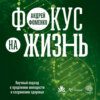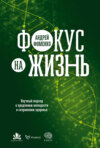Read the book: «The Power Of Youth. How To Tune Our Mind And Body For A Long And Healthy Life», page 8
MIRROR NEURONS AND EMOTIONS
Our brains have perfect hypersensitive sensors that instantly recognize the slightest shades of feelings and emotions of the people around us. Special cells called mirror neurons give our nervous system such abilities.
Mirror neurons were discovered relatively recently – in 1992. The discovery of "imitation and empathy cells," made by Italian researcher Giacomo Rizzolatti, was immediately dubbed by the scientific world as one of the key breakthroughs in neurobiology in recent decades. At the same time, there were prerequisites for this discovery before: they were associated with the discovery of some strange motor neurons.
Nerve cells responsible for motor activity were traditionally considered by scientists to be "muckers" capable only of following orders received from the "elite" neurons of the cortex and sensory organs. For example, visual neurons directly "see" a stone on the road, while motor neurons only receive a signal from them to "find another route," but they remain "blind" at the same time.
The more surprising is the discovery that about 20 % of motor neurons play by completely different rules: they fire (show activity) not only when you act, but also at rest. And even during motor activity, they behave unpredictably: they fire during one movement, but not during another one, which is very similar.
After several years of observations and experiments, the researchers were able to compile a list of "oddities" of these neurons:
● they react only to move with purpose: if you reach out to take a cup of tea, they fire. And if you make the same movement, but with no purpose, there will be no activity;
● they are activated when we see objects with which we can interact (movement does not occur, but it can happen). For example, they are firing when we look at a cup from which we can drink, or a pen lying on the table with which we can write. Neurons allow us to sort of scan our surroundings with an ulterior motive, detecting objects that we can do something with. It is important that we already have experience interacting with the object (or have seen it used by others) – neurons will not respond to unfamiliar objects;
● they are firing by observing another person performing an action we understand. If we see someone drinking tea, these neurons will react to the action as if we were taking the cup and drinking the tea ourselves. And visual neurons respond not only to the actions of others occurring in reality but also to images – drawings, and videos. For this ability to "reflect" actions, creating in the brain a virtual image of the action performed, nerve cells were called mirror neurons;
● they do not respond if the movements of the observed subject are not part of our "motor repertoire," that is, the list of actions that we are familiar with at the physical level and whose purpose we understand. For example, the mirror neurons of a person who has ever danced will unload when watching another dancer, because what is happening is part of their "motor repertoire." Those who are far from dancing can get aesthetic pleasure from watching each move, but their mirror neurons will be at peace.
Thus, mirror neurons are very unusual cells that combine the functions of motor and visual neurons. Moreover, there are mirror neurons capable of responding to sound stimuli as well. They are firing when we hear sounds characteristic of certain activities, such as the sound of a spoon on glass walls that occur when we drink tea.
Mirror neurons help make sense of what others are doing. This understanding is needed to select the options for possible responses that are most appropriate to the situation. This makes any action of others meaningful to us and our actions meaningful to them. Thus, creating a common space of action.
How are mirror neurons related to emotions? Looking at the facial expression of a statue created thousands of years ago, or a person from a fundamentally different culture, we can easily consider their emotional state. What is the reason for the same facial expressions? The fact is that originally most facial expressions associated with basic emotions (fear, disgust, joy, sadness, anger) were designed to convey information related to survival to others. For example, disgust was originally a reaction to low-quality food: the expression that appeared on the face of a person who tasted spoiled food was instantly read by others, and they understood that it was not worth eating. The brain part responsible for the adverse response is called the insular cortex, where the neurons responsible for the sense of taste and smell are located. Moreover, signals about the condition of internal organs come here. Irritation of this area leads to nausea and vomiting, as well as discomfort in the mouth and throat.
That is why disgust, no matter what caused it – the touch of an unpleasant person, the strong smell of sweat, bits of food in someone's beard – causes the same reaction. There is a desire to pucker up the mouth, wrinkle the nose, spit, and in the case of strong disgust there may even be retching – exactly how we behave when we feel the taste of spoiled food.
Studies have shown that the insular cortex is rich in mirror neurons that respond to the wry face of another person as if we were experiencing it ourselves. The same physiological reactions may occur, including nausea and vomiting. Mirror neurons allow us to instantly read other emotions as well, experiencing them on a physiological level. A spasm of fear on the interlocutor's face, which creates a release of adrenaline (dilate pupils, pallor, frozen facial expressions indicating physical readiness to run or attack), will immediately affect our condition, in turn leading to an adrenaline surge. And it will happen in a fraction of a second, even before we understand the reason for the interlocutor's fear. The feeling of joy on another person's face is read by mirror neurons as a message of "all is well and calm" – and our body relaxes in response.
Importantly, basic emotions are recognized and reflected reflexively, essentially without our consciousness, because they are part of the brain's built-in survival mechanism. More complex emotions, such as empathy for pain, often depend on the situational context and personal qualities. Our mirror neurons will easily reflect someone else's suffering if it is familiar to us (it's easy to understand how someone with a toothache feels if we have experienced it ourselves). However, everyone's sense of compassion manifests itself differently: some may empathize with almost everyone, others – only the closest, and the suffering of unpleasant people may even satisfy someone. Recognition of some emotions depends on experience: a woman who has children easily "reflects" (on an emotional and physical level) the feelings of a young mother. We have a better chance to understand a person who suffered a loss in a similar situation, etc.
CONCLUSION: HOW TO DEVELOP EMPATHY?
Empathy is the ability to easily recognize another person's emotions and be able to empathize with them. Most of us do not need to go through training and read books explaining how to become an empath: a system of mirror neurons, evolutionarily "embedded" in the brain, allows us not just to see and somehow evaluate the feelings of the interlocutor, but, in essence, to stand in their place, to share their feelings. This is especially true for basic emotions: even if a person controls their feelings, our built-in "mirrors" only need a fleeting facial movement to recreate a picture of the emotions raging within them.
According to Giacomo Rizzolatti, the discoverer of mirror neurons, these nerve cells "allow us to grasp the minds of others not through conceptual reasoning but through direct simulation – by feeling, not by thinking."
Why is it that some people use this gift successfully, while others are constantly deceived about the feelings of their interlocutors? Can the mirror system let us down? The function effectiveness of mirror neurons depends primarily on mindfulness, both of oneself and others.
For example, if you look closely at the interlocutor, mirror neurons receive maximum information, allowing you to "feel" what is going on inside them. At the same time, extraneous thoughts, such as the impression we make on others, prevent us from focusing on the other person. And if some information does get into our mirror system, we may simply not notice it, because our sensations occupy us much more. At times people can recall that during a conversation with a person "something warned them," they had a bad feeling, but they suppressed it because they wanted to believe, for example, in the decency and sincerity of the interlocutor.
So how do we "develop empathy"?
● "Empathy pimping" is mindfulness training to give maximum "food" to mirror neurons. It is necessary to be able to focus on the other person's facial expressions, posture, and gestures, and even "smell" them. But do not try to conclude with the help of reason: it is more important to listen to your feelings, to the slightest changes within yourself. It is this "mirroring," which allows us to understand a person's real feelings and intentions, that underlies the empathy needed to succeed in society, whether in a romantic relationship or business.
● It is important to remember the other side of "mirroring": the effect of our feelings on other people. A sincere smile and relaxation will instantly "reflect" inside the interlocutor, increasing the chances of their disposition to us, and tension will respond with wariness: an attentive person's "sensors" can easily detect insincerity gestures. Therefore, the more harmonious personality, the smaller the gap between feelings and intentions, the more unambiguous signals will be interpreted by others, and the more accurate will be the impression of you as a person who can be trusted.
● The more sensations we have experienced in life, the wider the range of feelings our mirror neurons can recognize. After all, in addition to the basic emotions recognized even by a young child's mirror system, there are many complex emotional states. Traveling, communicating with different people, and constantly getting new experiences, we expand the palette of colors of our mirror system, increasing its chances of identifying the smallest shades of feelings of another person, thus multiplying the ability to empathy given to us by nature.
CHAPTER 8
IMMUNE SYSTEM
"HE HAS GOOD IMMUNITY," WE SAY OF A PERSON WHO RARELY CATCHES A COLD, AND SHOWS AN ENVIABLE IMMUNITY TO SEASONAL ATTACKS OF MALICIOUS GERMS. BUT PROTECTION AGAINST EXTERNAL THREATS – AGGRESSIVE VIRUSES OR BACTERIA – IS NOT THE ONLY FUNCTION OF THE IMMUNE SYSTEM.
Recognizing internal dangers, such as mutations in DNA that can lead to cancer, is also the responsibility of our immune system. At the same time, numerous studies showed the imbalance of our body's defense mechanisms, the violation of the process of recognizing useful and harmful substances, and our and foreign structures underlie the development of many diseases.
If the immune system perceives harmless particles in the food or air as aggressors, allergic reactions occur. And problems with "recognition" of own tissues lead to the development of autoimmune diseases – the "immunity against the host" reaction. If previously such diseases included a narrow group of pathologies, today it is proved that the spectrum of disorders is much wider.
Studies show that autoimmune aggression is a factor in the development of diabetes, Alzheimer's disease, and many other diseases.
Moreover, chronic inflammation in the body, which is also associated with the malfunctioning of our immune system, is now considered one of the key causes of aging. Therefore, understanding how the immune system functions and how to support it is essential for a person seeking a long, healthy life.
HOW DOES THE IMMUNE SYSTEM WORK
Our body has several levels of protection against the invasion of foreign agents:
● external barriers – skin and mucous membranes. They are a mechanical obstacle in the way of aggressors, as well as a "reservoir" of several protective factors – chemical and biological. For example, foreign bacteria viability is reduced upon contact with the lysozyme contained in saliva, and to an even greater extent when exposed to the aggressive gastric juice. In addition, skin and mucous membranes contacting the external environment are covered with biofilm, a shell of friendly bacteria. Biofilm protects the body through a whole range of mechanisms. There is such a characteristic of symbiotic (friendly) microbes as antagonist activity – the ability to compete with "foreigners" for a place on the skin or mucous membranes. Beneficial bacteria also synthesize "natural antibiotics." For example, lactobacilli in the small intestine and the vagina produce lactic and acetic acids that inhibit the growth and reproduction of foreign microbes;
● innate (passive) immunity – protective factors that a child receives from his or her mother without direct contact with foreign agents;
● acquired (adaptive) immunity – several protective mechanisms that are formed during direct contact with various factors and contribute to the formation of individual immunological memory.
HOW DOES INNATE IMMUNITY WORK?
Immediately after birth, the baby's body is already "tuned" to recognize a certain range of dangers. The innate immune system can be triggered, first, by molecules produced by certain microbes, and second, by substances produced by cell damage.
The main mechanism by which innate immunity copes with the threat is phagocytosis – the absorption of the microaggressor or damaged cell by an immune cell (phagocyte). Immune system cells such as neutrophils and macrophages act as phagocytes.
Neutrophils are a type of white blood cells, leukocytes, which circulate in the bloodstream. When there is a danger signal (of foreign microbe or damage), neutrophils are immediately sent to the focus.
Macrophages are immune cells that "live" in tissues. In addition to their ability to absorb uninvited guests or damaged structures, they activate adaptive (acquired) immunity by "reading" the characteristics of the foreigner and sending chemical messages to their fellows. A kind of macrophage is mast cells83 living also in mucous membranes. They contain granules with substances that activate the inflammatory process in the body and play a role in the development of allergic reactions.
INFLAMMATION IS A DEFENSE MECHANISM THAT CAN DESTROY HEALTH
The most important mechanism by which the innate immunity protects the body is inflammation. Its task is to form a barrier between the area damaged by mechanical or chemical trauma, microbial invasion, and healthy tissues.
Moreover, immune cells involved in inflammation send chemical signals that activate the migration to the focus of other factors that contribute to the destruction of pathogens, cleaning the site of dead cells and microbes, and healing of injured tissues. As the damaged area recovers, the immune system triggers a reverse process to help suppress inflammation.
It is the right balance between the processes of activation and suppression of inflammation that characterizes the work of a healthy immune system. However, some factors disrupt this process, shifting it toward the development of chronic inflammation. Among them are frequent stress, a sedentary lifestyle, obesity, and body aging. In the body of an elderly person, the number of immune cells suppressing inflammation decreases, and the number of immunocytes provoking inflammation increases. As a result, there are conditions for the development of many chronic diseases belonging to the age-related category (various metabolic disorders, diabetes, atherosclerosis, cancer, dementia).
The role of chronic inflammation in accelerating the aging process has been proven in numerous studies. Scientists from the University of Madrid have found that energy deficiency in immune cells leads to accelerated body aging84. In experiments on mice, specialists destroyed mitochondria – cellular "batteries" – in immune cells responsible for inflammation. As a result, mice at seven months of age began to look and act like older animals: they developed muscle weakness, cognitive functions suffered, metabolic shifts characteristic of old age, and vascular disorders appeared.
In addition, the rodents began to show pronounced inflammatory reactions: the immune system showed excessive aggression, which led to even greater tissue damage. After the experimental animals were injected with drugs that helped restore mitochondrial function in immune cells, they began to show positive changes: heart function improved and muscle strength increased. According to experts, similar processes occur with age in the human body: over the years, more cells with damaged mitochondria, including T-lymphocytes, accumulate. Energy deficiency in immunocytes leads, on the one hand, to a weakening of the defense against foreign agents, and on the other hand, to the development of chronic inflammation in the body.
Among the factors helping manage chronic inflammation, physical activity plays a crucial role. A group of biomedical engineers from Duke University found that exercise can prevent inflammation within muscle tissue85. Scientists "grew" an artificial muscle platform, a cell culture capable of natural physiological contraction. The researchers then added gamma interferon, one of the proteins involved in inflammation and associated with various diseases that cause muscle atrophy and dysfunction, to these cells and simulated a chronic inflammatory process within the muscle tissue. This led to the loss of muscle mass and muscle strength.
In the next stage of the experiment, a pair of electrodes were connected to the artificial muscle to simulate physical activity. It turned out that muscle contractions lead to a decrease in the activity of inflammation. The technique's effectiveness was comparable to the effect of prescribing anti-inflammatory drugs.
Experts concluded that during exercise, muscles can counteract chronic inflammation by reducing its damaging effects.
ACQUIRED IMMUNITY – TARGETED ERADICATION
The main characteristic of acquired (adaptive) immunity is its high specificity – the ability to remember specific aggressors that pose a threat to health, and to eradicate them precisely when they meet again.
Two types of immune cells, B-lymphocytes, and T-lymphocytes, are responsible for the work of acquired immunity. B-lymphocytes are formed in the bone marrow and their immune activity is associated with the formation of antibodies – special proteins that are produced when they encounter a foreign agent called an antigen. Antibodies are a kind of body's "immune map": by their composition, we can learn about all encounters with foreign agents throughout life.
T-lymphocytes are several types of immune cells (T killers, T helpers, regulatory T cells) that are involved in recognizing aggressors, can destroy the pathogens themselves and infected and damaged cells, and regulate the immune system. T cells are "trained" in the thymus (thymus gland), the organ that plays the most important role in the immune system, and age-related changes in the thymus affect the rate of biological aging.
FUN FACT
THE IMMUNE AGE OF LONG-LIVERS IS 40 YEARS BEHIND THEIR BIOLOGICAL AGE
Researchers from the Buck Institute and Stanford University have identified several indicators helping to assess the immune age. The most informative biomarker of immune aging was the CXCL9 protein: it is known as a signal molecule that attracts immune cells to the site of infection. But a new study shows that CXCL9 also activates several genes that trigger inflammation and is involved in vascular and cardiac aging. Experiments on mice showed that suppression of this protein formation leads to the rejuvenation of vascular walls. Using a new tool, scientists assessed the immune clock rate in 902 people, among whom were healthy elderly people. It turned out that the immune age of long livers was on average 40 years behind their real age. Experts report a 105-year-old participant whose immunity indicators were consistent with a 25-year-old.
Experts also tested the new method in a group of 97 completely healthy people aged 25 to 97 years. It turned out that the level of the "aging protein" CXCL9 correlates with vascular wall stiffness (one of the key signs of cardiovascular aging).
















